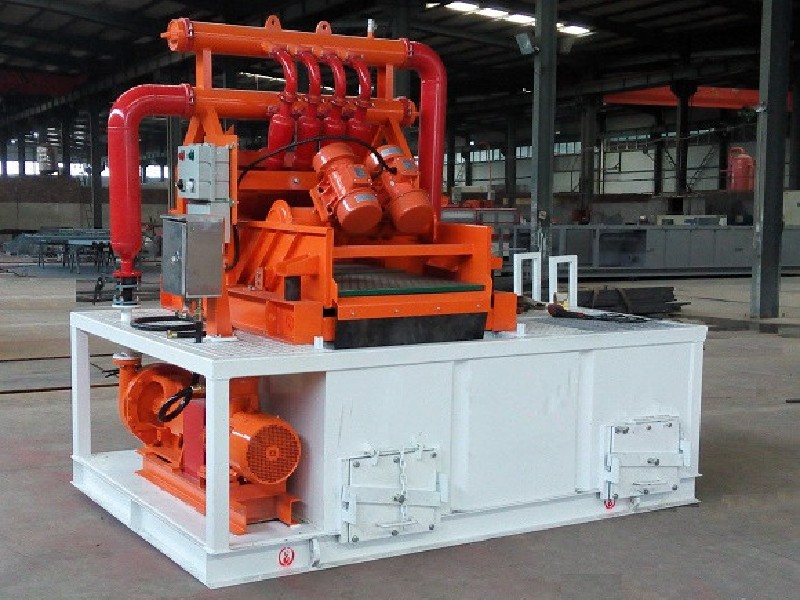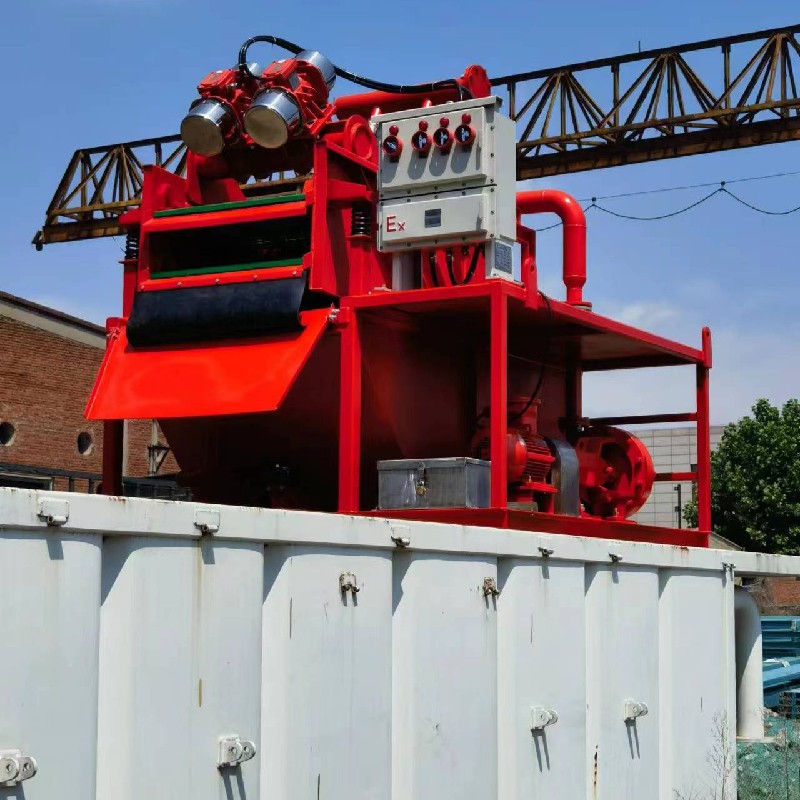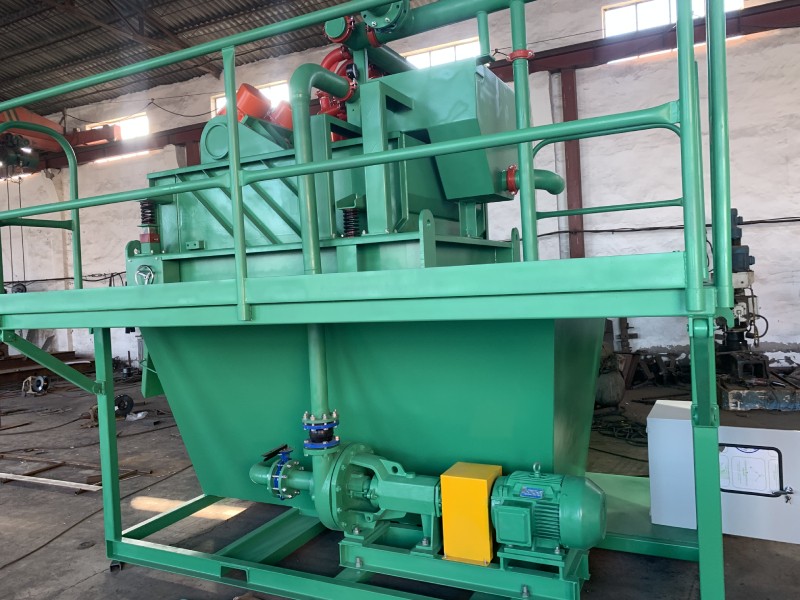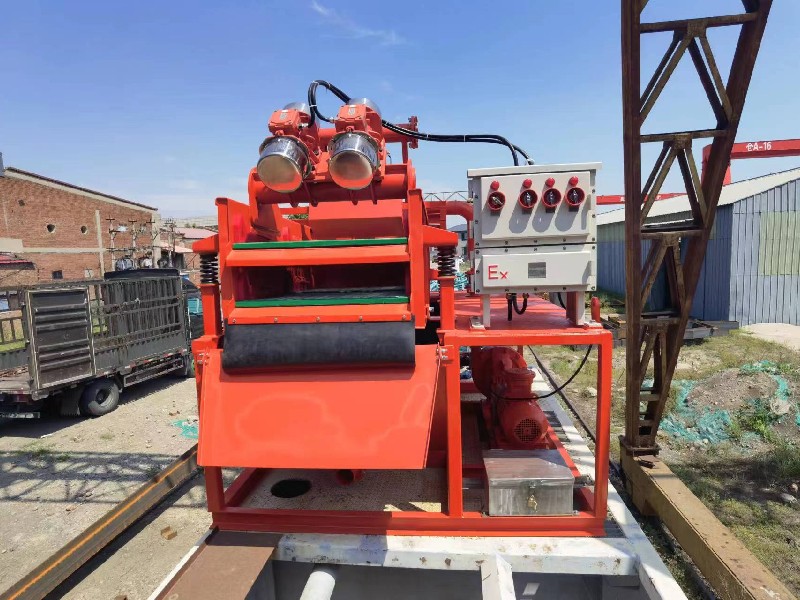In drilling operations, managing drilling fluids efficiently is crucial for both economic and environmental reasons. The bored piling mud system is an advanced solution designed to optimize the mud circulation system and mud recycling system, especially in pile foundation engineering and anti-seepage wall construction. This system significantly improves the reuse rate of waste mud, reduces costs, and supports environmentally sustainable construction practices.


Understanding the Bored Piling Mud System—H2
The bored piling mud system is a specialized mud circulation system used in various drilling processes, such as rotary digging drills and percussion drills. It adopts a mud wall protection technique, which helps maintain the stability of the borehole walls during drilling. The system ensures the continuous circulation of drilling fluids to carry cuttings to the surface while preventing the collapse of the borehole.
· Key Components: The system typically includes a mud tank in the drilling rig, shale shakers, desanders, desilters, and centrifuges. These components work together to separate solids from the drilling fluids, allowing for the clean mud to be recirculated back into the borehole.
Mud Circulation System: Enhancing Drilling Efficiency—H2
The mud circulation system is a critical component of the bored piling mud system. It facilitates the continuous movement of drilling mud through the drilling rig, ensuring that the borehole remains stable and that cuttings are efficiently removed.
Continuous Circulation: The system pumps drilling fluids down the drill string and up through the annulus, carrying cuttings to the surface. This continuous circulation helps maintain optimal drilling conditions, preventing borehole collapse and reducing the risk of equipment damage.
Improved Fluid Management: By managing the circulation of drilling fluids effectively, the system minimizes fluid loss and reduces the need for fresh mud, leading to significant cost savings.
Mud Tank in Drilling Rig: A Crucial Storage and Processing Unit—H2
The mud tank in the drilling rig plays a vital role in the bored piling mud system. It serves as a storage and processing unit for drilling fluids, ensuring that they are readily available and properly conditioned for recirculation.
Storage and Mixing: The mud tank stores both fresh and processed drilling fluids, ensuring a steady supply for the drilling operation. It also provides a space for mixing new mud or adjusting the properties of the existing mud to meet specific drilling requirements.
Solids Control: Equipped with various solids control equipment like shale shakers and hydrocyclones, the mud tank helps remove cuttings and other solids from the drilling fluids, maintaining their properties and ensuring effective performance.
Mud Recycling System: Promoting Environmental Sustainability
The mud recycling system is a key feature of the bored piling mud system, designed to enhance the reuse rate of drilling fluids and minimize waste. This system significantly reduces the environmental impact of drilling operations by recycling used mud and preventing its arbitrary discharge.
High Reuse Rate: The mud recycling system effectively separates solids from the drilling fluids, allowing for the reuse of clean mud in the drilling process. This high reuse rate reduces the need for fresh mud, lowering costs and minimizing environmental impact.
Environmental Compliance: By minimizing waste and promoting the reuse of drilling fluids, the mud recycling system helps drilling operations comply with environmental regulations, supporting sustainable construction practices.
Benefits of the Bored Piling Mud System in Drilling Operations
The bored piling mud system offers numerous benefits that enhance the efficiency and sustainability of drilling operations:
Cost Reduction: By improving the reuse rate of drilling fluids and minimizing waste, the system reduces the need for fresh mud and lowers operational costs.
Enhanced Drilling Efficiency: The continuous circulation and effective solids control provided by the mud system improve drilling efficiency, reducing downtime and equipment wear.
Environmental Protection: The system's ability to recycle drilling fluids and prevent arbitrary discharge supports environmentally sustainable construction practices, reducing the environmental impact of drilling operations.
Optimizing Drilling Operations with Advanced Mud Systems
Investing in a high-quality bored
piling mud system that includes an efficient mud circulation system, mud tank in drilling rig, and advanced mud recycling system is essential for optimizing drilling operations. These systems not only enhance drilling efficiency and reduce costs but also promote environmental sustainability by minimizing waste and reducing the environmental impact of drilling activities. By choosing the right mud system, drilling companies can achieve their goals of cost-effective and environmentally friendly construction.


 Linear Motion Shale Shaker In Drilling Rig
Linear Motion Shale Shaker In Drilling Rig  Oilfield Mud Cleaner
Oilfield Mud Cleaner  Drilling Fluid Decanter Centrifuge
Drilling Fluid Decanter Centrifuge  Drilling Mud Desander
Drilling Mud Desander  Hydrocyclone Desilter
Hydrocyclone Desilter  Centrifugal Pump/Centrifugal Mud Pump
Centrifugal Pump/Centrifugal Mud Pump  Shear Pump
Shear Pump  Jet Mud Mixer
Jet Mud Mixer  Horizontal Mud Agitator
Horizontal Mud Agitator  Constant Pressure Drilling Fluid Mud Gas Separator
Constant Pressure Drilling Fluid Mud Gas Separator  Mud Gun
Mud Gun  Mud Tank
Mud Tank  Solids Control System Vacuum Degasser
Solids Control System Vacuum Degasser  Flare Ignition Device
Flare Ignition Device  Diesel Tank
Diesel Tank  Submersible Slurry Pump
Submersible Slurry Pump 









































